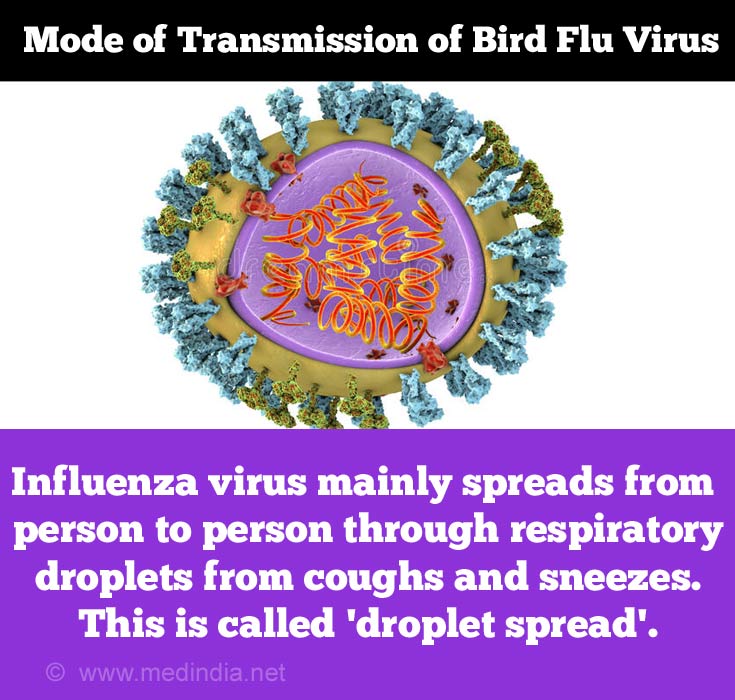Causes of Bird Flu
The H5N1 influenza virus causes bird flu. This virus that causes the bird infection can mutate to infect humans.
Mode of transmission of bird flu virus-
Waterfowls act as a reservoir of avian influenza virus by carrying the virus in their intestinal tract and shedding it in their feces. Avian influenza virus is spread to susceptible birds through inhalation of influenza particles from nasal and respiratory secretions and from contact with the feces of infected birds.
Influenza virus mainly spreads from person to person through respiratory droplets from coughs and sneezes. This is called ‘droplet spread’. This can happen when droplets from a cough or sneeze of an infected person are propelled (generally up to 3 feet) through the air and deposited on the mouth or nose of people nearby. Though much less frequent, the virus also can spread when a person touches respiratory droplets on another person or an object and then touches his/her own mouth or nose (or someone else's mouth or nose) before washing the hands.
A person can spread the flu one he or she is infected even before feeling sick. Adults can continue to pass the flu virus to others for another 3-7 days after symptoms start. Children can pass the virus for longer than seven days. Symptoms start one to four days after the virus enters the body. Some persons can be infected with the flu virus but have no symptoms. During this time, those persons can still spread the virus to others.














